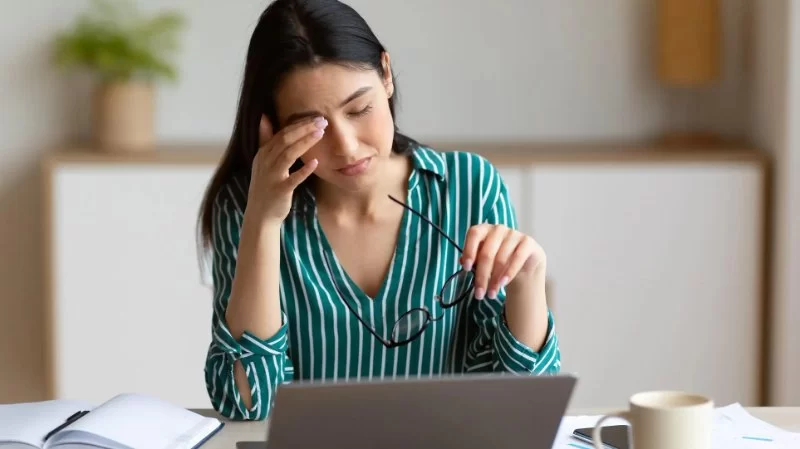
- how-to-prevent-eye-strain-during-exams-for-students-and-professionals-with-tips
- 1-understanding-the-roots-of-eye-strain-during-study-periods
- 2-early-signs-you-shouldnt-ignore
- 3-practical-and-effective-tips-to-prevent-eye-strain
- 4-environmental-and-lifestyle-factors-that-matter
- 5-real-experiences-and-student-stories
- 6-when-to-seek-professional-help-and-resources
How to Prevent Eye Strain During Exams for Students and Professionals with Tips
During exam periods or long work marathons, it’s easy to overlook the toll our eyes endure. Eye strain—characterized by tiredness, dryness, blurred vision, or headaches—affects thousands of students and professionals alike. But here’s the good news: it can be prevented. By understanding the causes and applying mindful strategies, you can reduce discomfort and maintain peak focus. This article explores how to prevent eye strain during exams for students and professionals, with actionable tips that go beyond the basics.
1. Understanding the Roots of Eye Strain During Study Periods
1.1 The Visual Load of Modern Studying
Digital devices are now inseparable from both student life and professional environments. From reading e-books to typing reports or practicing mock exams online, our eyes are constantly shifting focus and exposed to blue light, causing fatigue. Eye strain isn’t just physical—it disrupts concentration, reduces productivity, and can lead to long-term issues if ignored.
1.2 The Science Behind the Discomfort
When we focus on screens or printed material for extended periods, we blink less—sometimes only one-third as often as normal. This leads to dry eyes, irritation, and a lack of tear film stability. Combine that with bad lighting or incorrect posture, and the strain multiplies. Understanding these mechanisms is the first step toward prevention.
2. Early Signs You Shouldn’t Ignore
2.1 Visual and Physical Symptoms
Common early warning signs include blurry vision, eye soreness, headaches around the temples, and neck or shoulder tension. These symptoms typically worsen as study hours lengthen. Ignoring them may lead to more serious vision complications or mental fatigue.
2.2 Cognitive Red Flags
Decreased concentration, mental fog, and difficulty tracking text can all result from unaddressed eye strain. During finals or professional certification periods, these issues could mean the difference between passing and failing. A finance intern once shared with Eye Docs that after ignoring his headaches for weeks, he ended up missing his licensing exam due to a migraine triggered by overexposure to blue light.
3. Practical and Effective Tips to Prevent Eye Strain
3.1 Embrace the 20-20-20 Rule
Every 20 minutes, look at something 20 feet away for at least 20 seconds. This gives your eye muscles a chance to reset and reduces long-term fatigue. Set a timer or use productivity apps to remind yourself during long sessions.
3.2 Optimize Screen and Text Settings
Ensure your screen brightness matches your environment. Use dark mode or blue light filters, and increase text size for better readability. Professionals who use dual monitors or tablets should adjust angles to prevent constant eye shifting.
3.3 Use Artificial Tears or Eye Drops
Especially in air-conditioned rooms, your eyes may dry out faster. Preservative-free artificial tears can maintain moisture and prevent that gritty sensation. Eye Docs offers a curated selection of pharmacist-approved eye drops for this exact purpose.
3.4 Consider Blue Light Blocking Lenses
Blue light filtering glasses have become popular for a reason—they help reduce glare, improve contrast, and minimize exposure to harmful screen light. While not a cure-all, they’re a worthwhile investment during exam season.
4. Environmental and Lifestyle Factors That Matter
4.1 Lighting Conditions
Natural light is ideal but not always available. Use warm-tone LED lamps that reduce glare and avoid studying under flickering fluorescents. Position your light source behind your reading material—not directly in front of your screen.
4.2 Posture and Desk Setup
Poor posture strains not just your spine but also your visual system. Sit with your monitor about 20–26 inches away, the top of the screen level with your eyes. A student from Boston once shared how switching to an ergonomic desk setup eliminated not just eye strain but chronic neck stiffness as well.
4.3 Hydration and Diet
Eye health is supported from within. Drink plenty of water and eat foods rich in omega-3 fatty acids, like salmon or walnuts. Vitamin A, C, and E also contribute to overall ocular health. You’ll find supplement recommendations on Eye Docs tailored to long-hour readers and workers.
5. Real Experiences and Student Stories
5.1 The Law School Crunch
Sophia, a third-year law student, shared with Eye Docs how she used to study up to 10 hours daily before her bar exam. She suffered daily tension headaches until she implemented 10-minute outdoor walks every 90 minutes and began using moisturizing eye drops. Her concentration improved, and so did her mock scores.
5.2 Corporate Professionals Aren’t Immune
Michael, a software engineer working remotely, found that long coding sessions caused eye pain and blurred vision. After switching to a blue light-filtering monitor and adopting a two-screen rotation system, his symptoms dropped by over 60% in two weeks.
6. When to Seek Professional Help and Resources
6.1 Know When It’s More Than Just Fatigue
If eye strain persists even after applying the techniques above, or if it’s accompanied by nausea, dizziness, or persistent blurry vision, seek professional evaluation. Conditions like dry eye syndrome, astigmatism, or even early signs of glaucoma might be the cause.
6.2 Expert Solutions at Your Fingertips
At Eye Docs, our professionals specialize in exam-season vision care. Whether it’s personalized advice, blue light glasses, or medically-approved hydration treatments, we have options suited to students, interns, and full-time professionals alike. Don’t wait until symptoms get in the way of success—get proactive with your vision wellness today.








